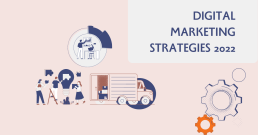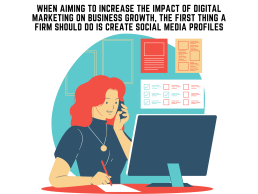Inflation is stressing out employees, HR leaders say

“This survey reveals that there are elements of the employee experience—outside of pay—that can support employees’ willingness to stay with a company,” said Robert Hicks, group HR director at Reward Gateway. “Whether it’s reward and recognition or financial, mental or physical wellbeing resources, HR leaders need all of these tools in their toolkit to best support their people right now, and help them retain their talent.”
Reward Gateway’s narrative for 2022 is the “Great Adjustment,” signifying that HR must adjust activities to focus on doing good by their employees. By making employee happiness the top priority, companies can ensure that productivity, retention and a more engaged workforce will follow. It will take a mindset shift for business leaders who’ve been in the game for decades, but if we’ve learned anything during the COVID-19 pandemic, adaptation is necessary to survive.
The survey included 3,799 employees and senior HR decision-makers across the U.S., United Kingdom and Australia. Founded in 2006, Reward Gateway provides an employee engagement platform that brings employee benefits, discounts, recognition and reward, wellbeing, communications and surveys into one unified hub. The company also has offices in Boston, Sydney and Melbourne, among other international destinations, and serves more than 2,000 clients, including American Express, Unilever, Samsung, IBM and McDonald’s.
The Content Preferences of B2B Buyers
B2B buyers say the top things vendors could do to improve their content are to curb the sales messaging and to create shorter pieces, according to recent research from Demand Gen Report and ON24.
The report was based on data from a survey of 174 executives (manager level and above) who work for B2B firms across a wide range of industries, including technology, professional services, and business services.
Some 39% of buyers say they'd recommend B2B vendors curb the sales messaging in order to improve content quality, and 37% say they'd recommend B2B vendors create shorter content.
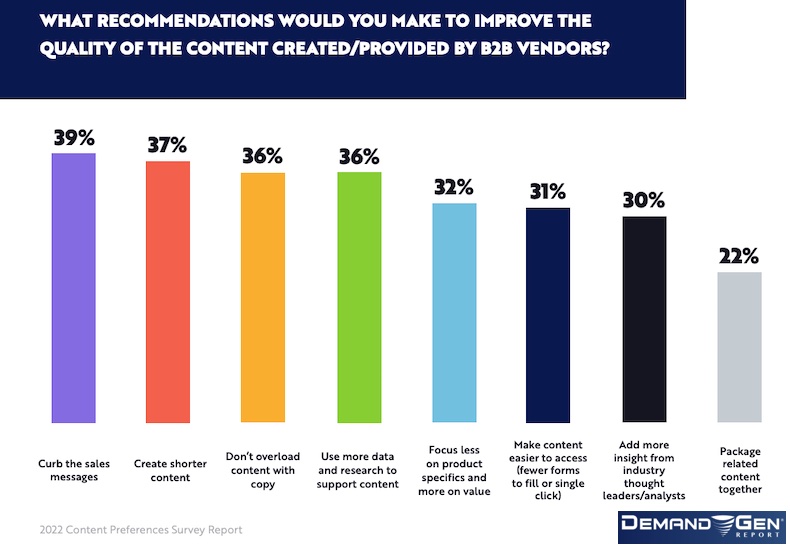
B2B buyers say the top things that make content memorable and trigger a sales call are when the pieces use data/research to support claims (51%) and when they tell a strong story that resonates with the buying committee (49%).
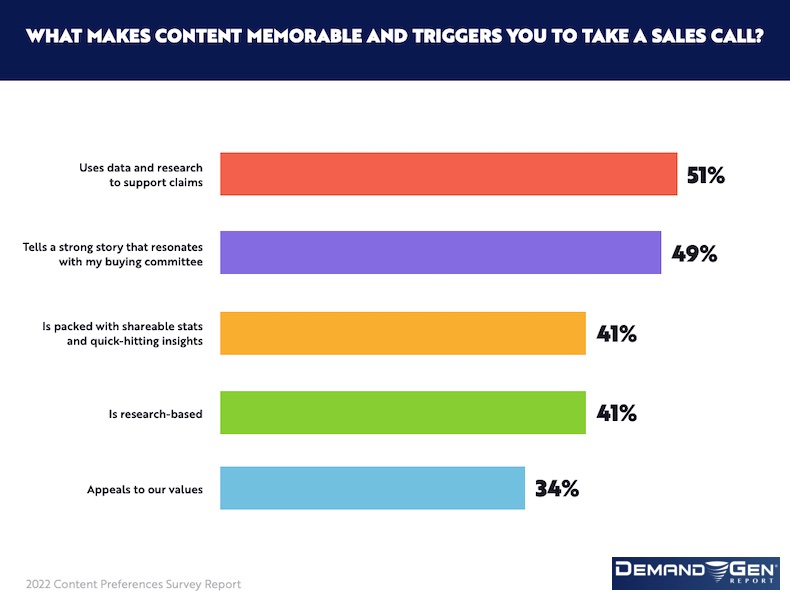
B2B buyers say they find research reports, case studies, and webinars to be the most valuable content formats/sources when researching purchases.
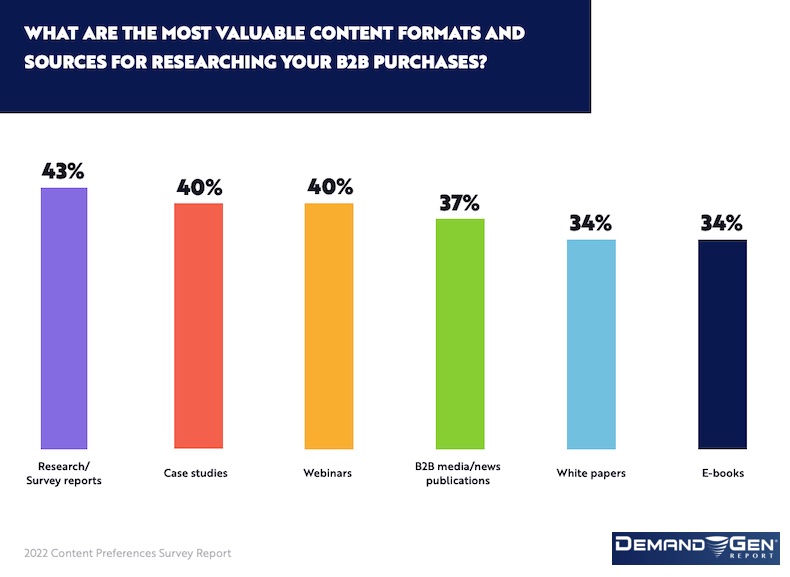
B2B buyers say they tend to find shorter content such as infographics and blog posts most valuable early in the buying process.
Buyers say they find webinars most valuable in the middle of the buying process.
 Read the original article from Marketing Prof
Read the original article from Marketing Prof
Does having COVID-19 in company's premises constitute loss for insurance purposes?

First, UTA’s alleged loss of use arose from an interruption in business operations, not from a physical deprivation of property, the appellate court said. The measures implemented to limit the spread of the virus had a weak relationship to any specific location.
Register: Employment Law Masterclass California
Second, the appellate court agreed with prior cases finding that the actual or potential presence of the virus did not constitute direct physical damage or loss to property. Short-lived contamination that simple cleaning could address would not amount to direct physical loss, the decision in Inns-by-the-Sea v. California Mutual Ins. Co. (2021) stated.
Relating to the policies’ civil authority provision, UTA argued that it was covered because the closure orders prevented access to its insured properties.
The civil authority order, on its own, could not cause physical loss or damage to property, the appellate court said. Rather, such loss or damage should precede and necessitate the order’s issuance. In this case, the governments were issuing closure orders because of the COVID-19 public health crisis, not because of damage to property near UTA’s insured premises.
Read the original article here
Why—And How—U.S. Companies Are Preparing For Increased Investigation And Regulatory Challenges
 Our firm, Norton Rose Fulbright, recently completed its 17th Annual Litigation Trends Survey. One of the significant takeaways is that major companies are anticipating a new wave of regulatory and investigation challenges. These concerns are heightened for companies with significant cross-border and complex regulatory exposure, such as those in the financial services, energy, consumer markets, life science/healthcare, technology and transportation industries. As the survey data shows, in-house litigation teams foresee regulatory and investigation issues as one of their top their legal concerns for the near future.
Our firm, Norton Rose Fulbright, recently completed its 17th Annual Litigation Trends Survey. One of the significant takeaways is that major companies are anticipating a new wave of regulatory and investigation challenges. These concerns are heightened for companies with significant cross-border and complex regulatory exposure, such as those in the financial services, energy, consumer markets, life science/healthcare, technology and transportation industries. As the survey data shows, in-house litigation teams foresee regulatory and investigation issues as one of their top their legal concerns for the near future.
Every year, Norton Rose Fulbright surveys corporate in-house legal departments about their perception of emerging disputes and litigation trends. This year, the firm gathered responses from more than 250 general counsel and in-house litigation team leaders. Some responses were collected by email, others by phone.
Highlights from the Survey Data
Respondents reported particular concerns regarding litigation, investigations, and regulation in the following subject areas: Environmental, Social & Governance (ESG), Cybersecurity & Data Protection, and Diversity, Equity & Inclusion.
Among other major themes, the latest survey data shows that:
ֻֻֻ• Companies increasingly report that investigations and regulation are their top dispute concerns: 33% of respondents said that regulation and investigations were among their top dispute concerns, up significantly from 24% and 15% in 2020 and 2019, respectively.
Read the original article from ChiefExecutive.net
The Real State Of Digital: Surprises From A Survey of 500 C-Suite Leaders
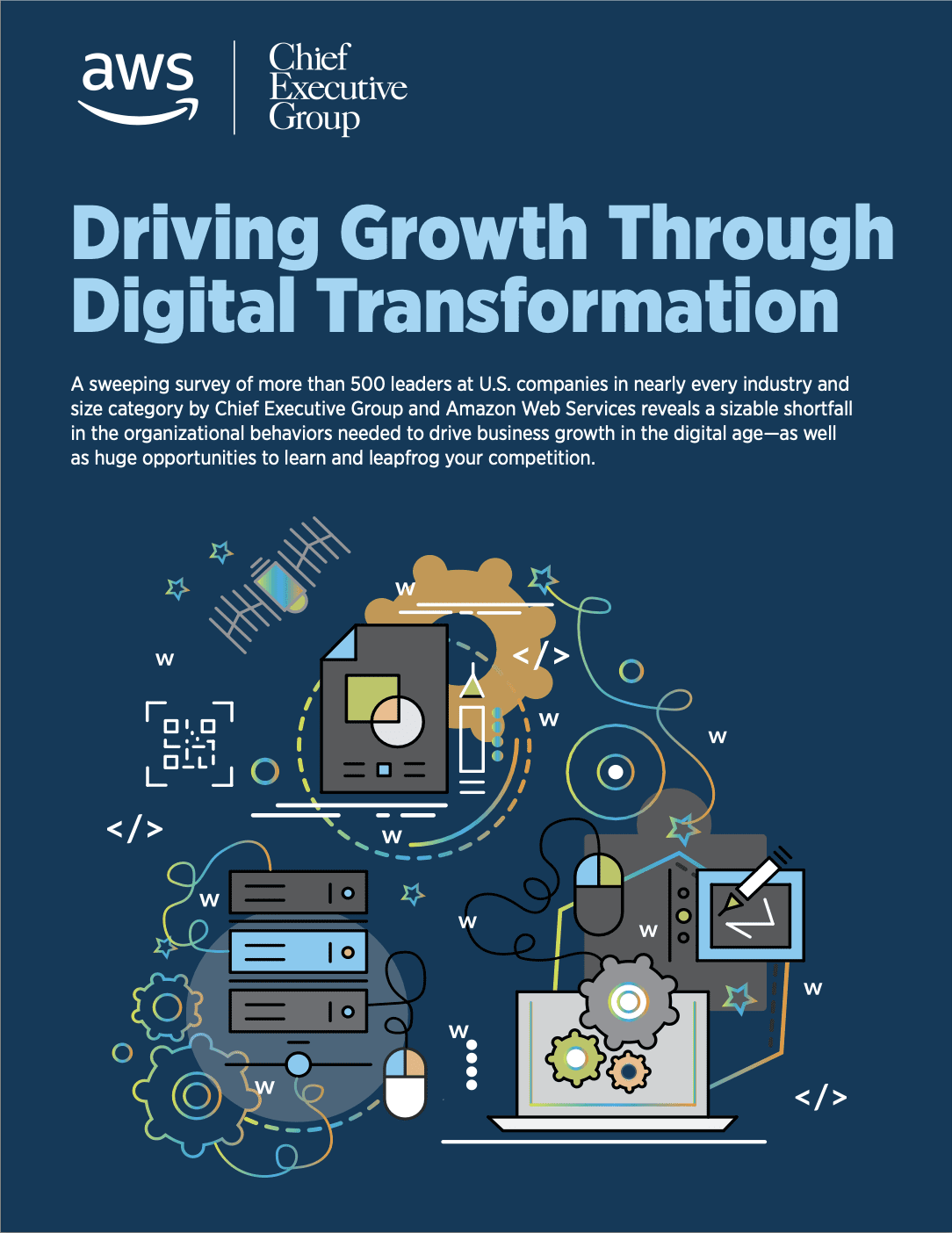
Perhaps the biggest question to emerge from the research is the one that’s proven the hardest to answer: Why, despite a decade or more of effort, are so many companies still lagging when it comes to digital transformation? In the interviews conducted as part of this investigation, of those who said they were behind the state of the art—or behind even where they thought they should be—few could really articulate why a more data-driven culture had not taken hold in their organizations. “One of my favorite questions to ask for the last few years is, ‘What problem are we trying to solve?’” says AWS Enterprise Strategist Phil Le-Brun. “Often, we race into solutioning a poorly defined problem. It’s not uncommon to launch into a transformation effort without fully understanding, or agreeing on, what success looks like.”
Complicating matters further, the data also suggests that many senior executives believe they are on a path to transformation, yet their reported behaviors don’t support that view. While more than half of those surveyed listed growth through either new (28 percent) or existing (36 percent) products or markets as their company’s top priority for the year ahead, the vast majority lacked the behaviors, processes and organizational structures exhibited by companies that have really harnessed the power of digital transformation for growth.
That’s because many companies are putting the technology before the business—and therefore the cart before the horse, says AWS Enterprise Strategist Jonathan Allen.
Read the original article from ChiefExecutive.net
Inflation pounds small business optimism to 48-year low

Dive Brief:
- The proportion of small business owners expecting brighter conditions for their companies slumped to the lowest level in 48 years, the National Federation of Independent Business (NFIB) said, primarily blaming the worst inflation in four decades.
- Nearly one out of three small businesses (32%) identified rising prices as their biggest problem — the highest reading since late 1980, NFIB said, describing survey results. Companies cited quality of labor and taxes as their second and third most worrisome challenges.
- “Small business owners are struggling to deal with inflation pressures,” NFIB Chief Economist Bill Dunkelberg said. “The labor supply is not responding strongly to small businesses’ high wage offers and the impact of inflation has significantly disrupted business operations."
Dive Insight:
CFOs concerned about the harm from inflation have found support in recent months from the Federal Reserve. The central bank this month reduced stimulus by raising the main interest rate by a half point and announcing plans for trimming its $9 trillion balance sheet.
“Rising inflation, increasing borrowing costs and ongoing geopolitical tensions pose risks to the economic outlook, particularly for businesses that were most affected by the pandemic,” the central bank said in a semi-annual report on financial stability.
Many big companies clawing back from coronavirus lockdowns carry too much debt, the central bank said. Gross leverage, or the ratio of debt to assets, persists at a record level for sectors hit hardest by the pandemic including airlines, restaurants and hospitality.
Read the original article from CFO DIve
How to Create a Winning Digital Marketing Strategy in 2022?
There are dozens of brands quietly building strong, data-rich digital marketing strategies for every overnight success in digital marketing. To commit to the process of growth, you have to be intentional and keep your attention on it.
You don't just want to be successful this month or this year. You always want to be successful. So, today we're going to look at how you can build a digital marketing plan that helps your business grow in a steady, long-term way.
Why do you need a plan for digital marketing?
Having a clear plan for digital marketing gives you some immediate benefits. Right off the bat, it gives you some level of protection. Brands make sure they spend their money wisely by planning well.
People often worry that their marketing campaigns will waste time and money, but it can be a nightmare if you don't have important information about your marketing plans and how you make decisions.
When you make a plan for digital marketing, you can test and confirm certain marketing data points. Let's say that your latest campaign is trying to get customers to act in a certain way.
When you have a clear digital marketing strategy, you can put your marketing assumptions to the test, which is especially helpful when you're trying to reach specific people.
At the same time, your digital marketing strategy is laying the groundwork for continued marketing growth. Imagine that the first marketing push for a brand doesn't do very well. Without a clear plan, it can be hard to figure out exactly what went wrong.
- Did they pay attention to the wrong KPIs, or key performance indicators?
- Did they start out with goals that were too high?
- Was something wrong with the way they looked at their competitors?
When you have a clear plan for your digital marketing, it's much easier to answer these questions.
4 Steps to Make a Plan for Your Digital Marketing
If you've never made a digital marketing plan before, it can be a little scary. When making your marketing strategy, you can choose to focus on many different metrics and methods.
For now, let's focus on two important things: clarity and trying new things. To make things as clear as possible, we'll spend time figuring out who our target audience is and what our goals are. When it comes to trying out new things, we're going to focus on growth and putting certain marketing strategies into place.
As time goes on, your digital marketing strategy will get more complicated as it grows. The more information you gather, the more complicated your plan will have to be. That's why it's so important to start out by building a strong foundation.
1. Research and Get to Know Your Audience
Before we jump into digital marketing strategy, we need to take some time to explain the idea of target audiences.
There are certain data points that help define target audiences, such as:
- gender
- age
- education
- ability to buy
- location
By focusing on certain groups, you can get the most out of your advertising budget.
This, of course, brings us to the hardest part of audience targeting: figuring out who your audience is.
You should start by looking at your market. Find out if you are in a well-established market or one that is still growing.
Is your business a big one?
Who do you think are your main rivals?
Once you’ve clearly defined your market, think about the type of customer you’re looking for. A good rule of thumb is to start with a general idea of your ideal customer and then use data points to narrow down your audience even more.
For instance, let's say you sell high-quality backpacks for hiking. You can start by deciding that one of your target groups will be hiking-loving men. But if you look into your ideal customer's age, location, and income, you can get a much clearer picture of who they are.
Men between the ages of 25 and 35 who live in Colorado and make between $4,000 and $6,000 a month could be the people you want to buy your product. Still, this is only a small part of the problem. If you want to know your audience well, you need to know how they use digital media.
Find out what the most popular blogs are in your field, where they shop online (like REI), and what YouTube videos they watch. Keeping track of this information gives you an idea of what they like to read, which will make it much easier to reach out to them and make content for them.
2. Set goals and KPIs for your digital marketing strategy
Remember when we said that clarity and experimentation were two important things? Well, setting goals in the right way makes it easy to track and change your digital marketing strategy.
Okay, it's important to set goals. The real question is how on earth should you set marketing goals?
Most people tend to think about qualitative goals when they think about setting goals. One example of a qualitative goal would be to improve the way people see your brand or to move your brand up in its industry.
You can start to see why these kinds of goals are not good. Qualitative goals are notoriously hard to measure because they are not concrete.
Since it's hard to measure something, it's also hard to make it better.
Instead, focus on goals that can be measured. Let's try a little thought experiment if this is getting too hard to understand.
Let's say that we have two brands, A and B. With their new marketing campaign, Brand A wants to change how customers see them. They use their advertising budget to make content that makes their brand look good, and they share that content on many different channels.
Even though they get a lot of visitors, they quickly realize there's a huge problem. From this campaign, they haven't really learned anything useful. Brand A isn't sure why they got so much traffic, and they're also not sure how much of that traffic turned into sales. If they didn't pay attention to being clear or collecting data, they didn't have a real way to grow.
Brand B did things in a different way.
Instead of focusing on the big picture, they chose to set measurable goals. Brand B didn't just want to change how customers saw them; they also wanted to sell more of product X. Product X makes up 75% of their business, so improving the conversion rate of this product is one of Brand B's top priorities.
The goal is to raise the number of people who buy Product X by 5% over the next six months. They plan to do this by making more posts on social media, making video ads, and sending out a monthly email newsletter.
Make no mistake, Brand B began the process of setting goals by coming up with some vague goals. The difference here is that Brand B went a step further and set concrete goals for each of the more general goals. It is easy to measure and can be broken down into simple parts so that you can try different things.
If the goal is reached, Brand B will know exactly what action led to the increase in conversions. If they don't reach their goal, they will know exactly which parts of their marketing didn't work right. Brand B gets the information they need to make their next marketing campaign a success, no matter what happens.
Set clear, measurable goals, figure out which KPIs are important for your brand, and set goals that allow for long-term growth and experimentation.
3. Make a plan for your digital marketing
Now that we've taken care of the basics, it's time to make a digital marketing plan and put it into action.
The hardest part is figuring out which form of digital marketing to focus on. This step is stressful for a lot of people, so you're not alone. One of the things that makes this decision so scary is the fear of putting money into a channel that won't work.
Brands can find out how effective a channel is without spending thousands of dollars on it by starting with small campaigns that are very focused.
Want to know more about paid social media ads? Set a goal, do a little bit of marketing, and see how useful Facebook ads are for your brand. Using this information, you can guess how successful future campaigns in that channel will be.
In fact, if you use this method across multiple channels, you'll quickly get a good idea of which channels work best for your audience. Test different marketing strategies and different groups of people to get as much useful information as possible.
In a year's time, you'll have a set of easy-to-understand data points that you can use to make successful marketing campaigns.
When it comes to making content, there are two main ways of thinking about it. Sometimes, the people who are listening to you want to be entertained. Fun content can be a powerful tool if it fits with your brand and you are sure of your writing skills.
It could be a funny video ad or a meme on social media. It's not the best way to do things for everyone, but it works well when it's done right. Take a look at Old Spice and you'll see that its weird sense of humor fits their brand voice perfectly.
Let's say you don't think you have a good sense of when to be funny or that your brand doesn't fit with absurdist internet humor. The second way of thinking comes into play here. It can be just as powerful to teach your audience something as it is to entertain them.
To be clear, when we say "educate your audience," we don't mean that you should only teach them about your brand. No matter what the business is, customers have problems that need to be fixed. Most of the time, they'll have problems in their industry that you might not be able to solve right away.
Here's what I mean. Say you're trying to sell those hiking packs again. Could you just keep writing about backpacks for hiking? Yes, but there's a lot more you can talk about!
If you're selling to hikers, they have a lot of questions about what kind of grills to use, how to help first-time hikers, what to look for in a sleeping bag, etc. If you are an expert in your field, you probably have enough ideas in your head right now to fill a whole blog.
A good rule of thumb is that if you wish you had known about it when you first started, it will help someone else. You don't have to spend a lot of money on advertising to reach people. Just make marketing content that seems like it could really help people. If you can do that, you can make marketing campaigns that really make a difference.
4. Keep getting better
Brands all over the world have trouble with growth, especially growth over the long term. It's one thing to gather all those pieces of information. It can be frustrating to try to turn them into the marketing campaign for the next quarter.
Here are just a few of the problems that brands face when their marketing campaigns come to an end.
- The brand has no idea what problems need to be fixed.
- The brand doesn't know enough about their customers.
- The brand can't see how their data is useful.
- The company has too much information and can't figure out what it all means.
You can always ask professionals for help analyzing and making changes, but if you have a small marketing budget, that might not always be possible.
Setting clear, measurable goals and keeping track of your results makes this process a lot easier, but some brands have trouble understanding the idea of long-term growth. What growth looks like in the real world, to be exact.
To answer that: growth isn't always a straight line. You might put money into five different marketing channels, but only one of them will give you a good return on investment, or ROI.
Every time you add to your digital marketing strategy, you'll learn which parts work and which ones don't. Smart brands know this and work to build their business in a way that will help it grow over time. They will check out the newest social media site. They will try the newest ways of marketing.
This approach probably won't lead to astronomical growth in two months, but the goal of a strong digital marketing strategy is to not stumble upon a marketing channel that gives insane results. Why? Well, because sometimes these ways stop working.
Instead of looking for the "silver bullet" of marketing, collect useful information and slowly build a long-term plan for steady growth.
It's easy to think about the more technical parts of digital marketing when we think of e-commerce businesses. SEO, Pay-Per-Click, etc. Amazon, one of the biggest e-commerce sites in the world, does things a little differently.
Amazon has a strong social media marketing plan that is meant to inspire and connect with potential customers in new and interesting ways.
There's more to social media marketing than just paid ads and memes. When your e-commerce brand talks to customers on social media, for example, the whole world can see how you handle both compliments and complaints.
Amazon cares so much about social media that they've made their own shopping feed for social networks. Customers can talk to brands through the Amazon app's feed for that brand, which is made possible by Amazon Posts. These posts are about products and are written in a way that consumers are used to.
By understanding the power of social media interactions, e-commerce sellers can find new ways to connect with and talk to customers.
Note: Small business owners also need a digital marketing plan.
It's rarely easy to make content that really makes an impact. Even big brands like Coke and Pepsi don't always get it right. That's why I'm always amazed by how quickly Dollar Shave Club became popular.
In Dollar Shave Club's very first video ad, they make a strong case for their product while also making it a lot of fun to watch. You want your small business to make a difference. Most small business owners think they need a huge advertising budget to compete in their industry.
Let's get something out of the way: you don't need money to stand out. You just need to know your brand, who you're trying to reach, and what makes your product unique.
Every marketer has had to deal with the fear of coming up with old, boring content. Once you've thought of all the usual content ideas for your industry, it can be hard to come up with new and interesting content ideas. Smart marketers get around this problem by promoting user-generated content, or UGC.
UGC gives the average customer a unique way to interact with your brand. More importantly, it might give you an idea for something you can share with your audience. The real challenge is to find an action or activity that is interesting enough to make people want to take part.
The Starbucks Cup Art challenge is one of the best examples of how UGC is used in marketing today. People really like the way Starbucks looks, and being able to contribute to that look was a fun and exciting chance.
Customers were encouraged to come up with their own designs for Starbucks, and the company promoted the best ones and even kept some of them.
Find out what your customers love about your brand and give them a real say in how it grows in the future.
Author Bio: Shaifali’s
Shaifali is a content writer who is a marketing geek holding a degree in MBA-Marketing. She writes about digital marketing strategies, metaverse marketing, content marketing, metaverse, artificial intelligence, B2B marketing, blockchain and cryptocurrency.
She is creative, organized, strategic and analytical. Her strength lies in being empathetic. Due to this quality, she is able to step in the shoes of the audience and know their pain-points and write the exact content around it.
When she is not writing, she is either gardening, or creating DIYs at home, decorating her newly rented apartment or sipping tea in her balcony watching the moon and stars. She loves nature and everything about it.
Here’s How Digital Marketing Impacts Your Business Growth
Digital marketing methods have a significant impact on profit margins and a company's capacity to expand. A company's growth is limited if it does not utilise digital marketing tactics. In this article, you will get a gist of how digital marketing impacts your business growth.
Ways Digital Marketing Affects Your Business Growth
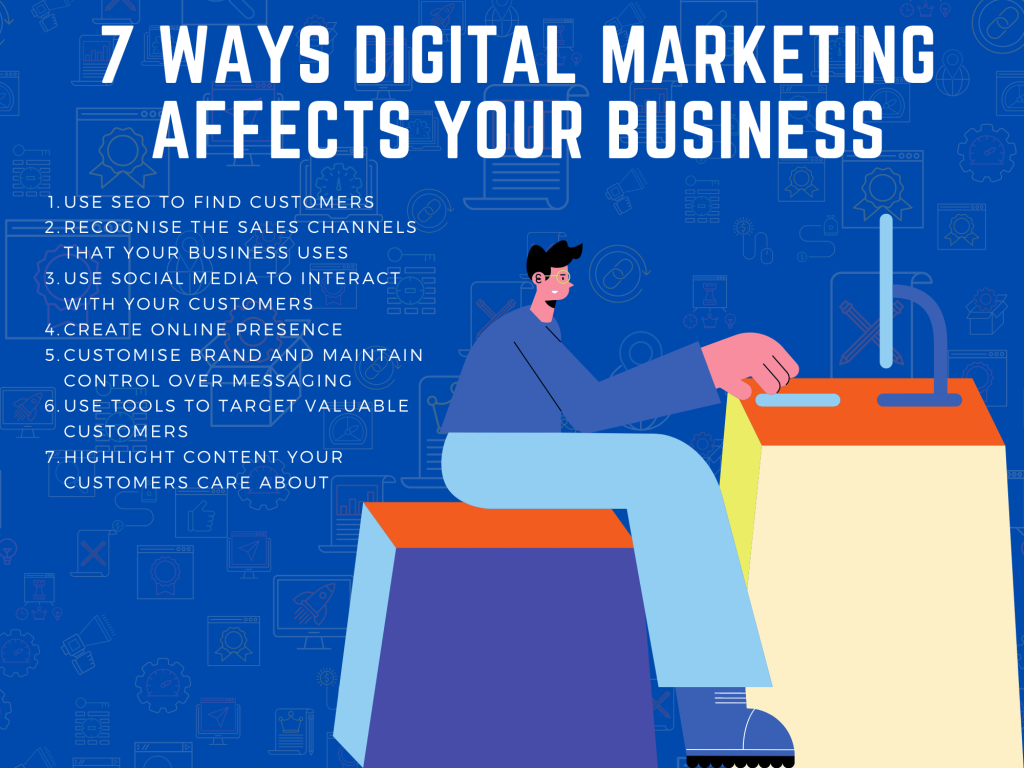
1. Use SEO to find customers you would not have found otherwise.
If you have even a strong comprehension of digital marketing, you've come across the term SEO and its acronym. The objective of applying SEO strategies is to boost the ranking of your content materials in search engine results. The higher your ranking in SERPs, the more your potential clients will see your website and other material.
Because 75% of Google searchers don't look past the first page of results, ranking is crucial.
From your viewpoint, more visitors to your website equals more opportunities to grow your brand. Each visitor to your website who isn't a current customer is an opportunity to expand your database. This visitor may sign up for your email list or make purchases from your eCommerce website that day.
While your clients are essential, any brand needs to bring in new customers to stay afloat. You may achieve just that by employing SEO methods. Another incentive to improve your SEO is that it establishes your website's reputation with Google.
The more Google perceives your site as an authority on its chosen subject, the more it will be valued. Thus, being a premier Google partner benefits your business in a number of ways.
This increases your chances of being noticed by a more significant number of web browsers. Create quality backlinks as one of the approaches to boost your authority to aid in this aspect.
2. Recognize the sales channels that your business relies on.
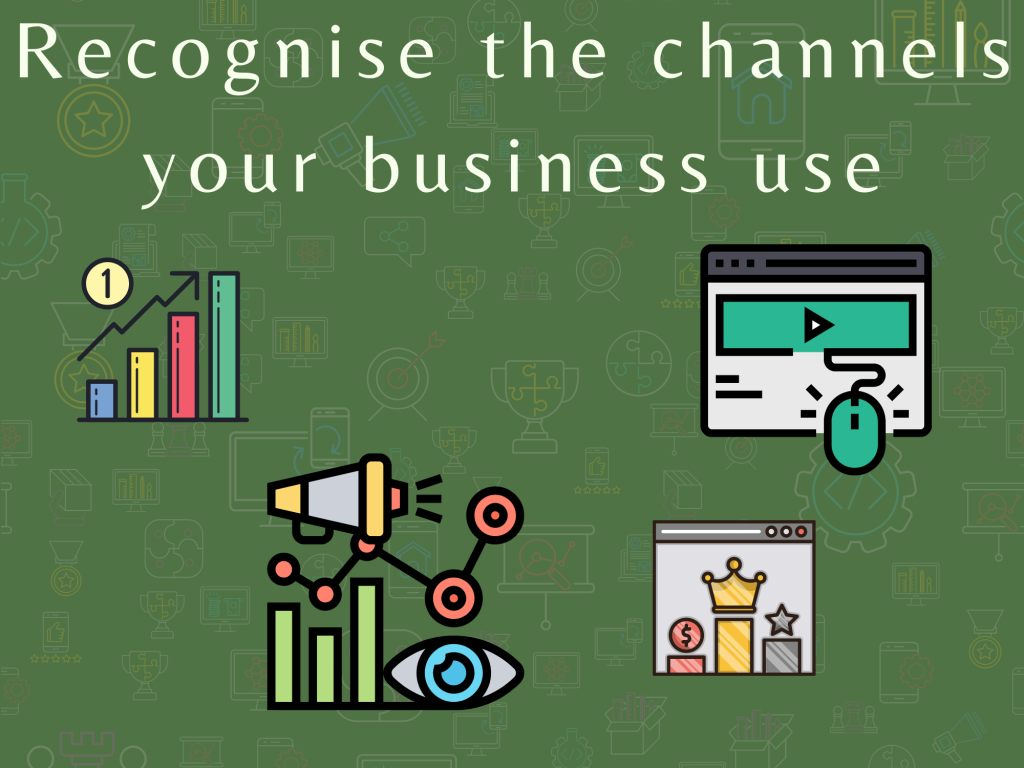
One of the most appealing areas of digital marketing's impact on business growth is the ability to see results almost instantly.
If you conduct a google ads management and notice an increase in sales, you can credit it to the campaign efforts. You may also use services and programs to see which channels and advertisements bring you the most visitors - such as LinkedIn advertising. All of these factors can help you decide where to place your next ad and how much to spend.
Before you start any marketing effort or initiative, the first thing you must do is identify the metrics you want to examine and track.
Once you've determined your goal, it'll be much easier to produce an ad that achieves your goal. You should track how well your ad converts viewers into purchasers if you want to increase sales. Observe your figures after your campaign launches if you're going to raise brand awareness by gaining more followers on your social media sites.
3. Use social media to help you communicate your message and interact with current and potential customers.
Social media dominates many elements of the typical person's life. It should also be a significant component of any digital marketing approach you develop. Social media channels are another way to connect with both new, prospective, and existing customers. They also allow you to cross-promote your material from one channel to another.
Here are a few more compelling reasons why you should have a social media presence and plan.
- Allows a company to engage in interactions with customers that would not have occurred otherwise. Customers will feel like they are a part of something and that the firm values them.
- It's excellent to be able to reply immediately to client feedback and inquiries via social media.
- You can utilize your platforms to watch the competition and monitor what they're saying and doing and how customers receive their branding.
- Even if your customers do not mention your brand in their comments, you can use social listening tools to see what others say about your company.
4. Create an online presence.
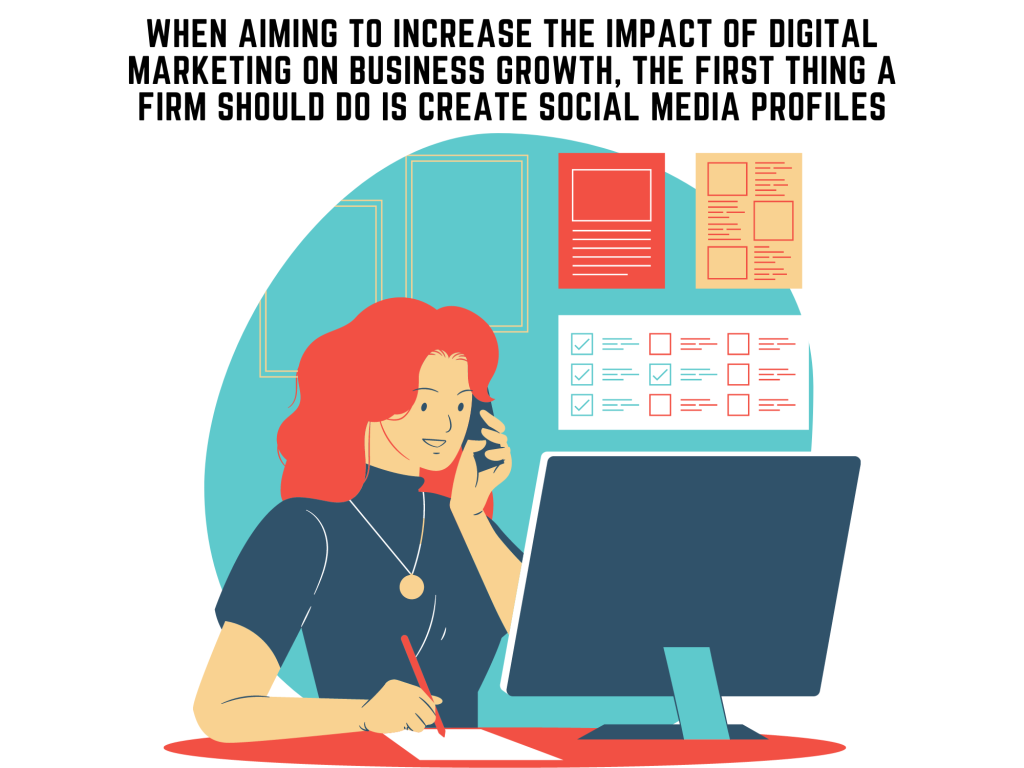
No one will find you if you are not online in today's environment. To witness the effect of digital marketing on your business' growth, you must first build an online presence. A digital marketing agency can help you in this manner.
Consumers today do not use a phonebook; instead, they utilize Google, Facebook, or ask their social media buddies. You are missing out if you are not present. When a consumer considers purchasing a product or service, you must be there where they will be looking. When aiming to increase the impact of digital marketing on business growth, the first thing a firm should do is create social media profiles. A digital marketing agency that specialises in this area can help you out.
Claiming your Google Business listing is one of the most critical things a company can do.
Because Google is the most popular search engine, you should take advantage of all of its features. Your specific location will appear in a local Google search and their maps application after you claim your Google listing. This will assist in bringing customers to your door.
5. Customize your brand and maintain control over your messaging.
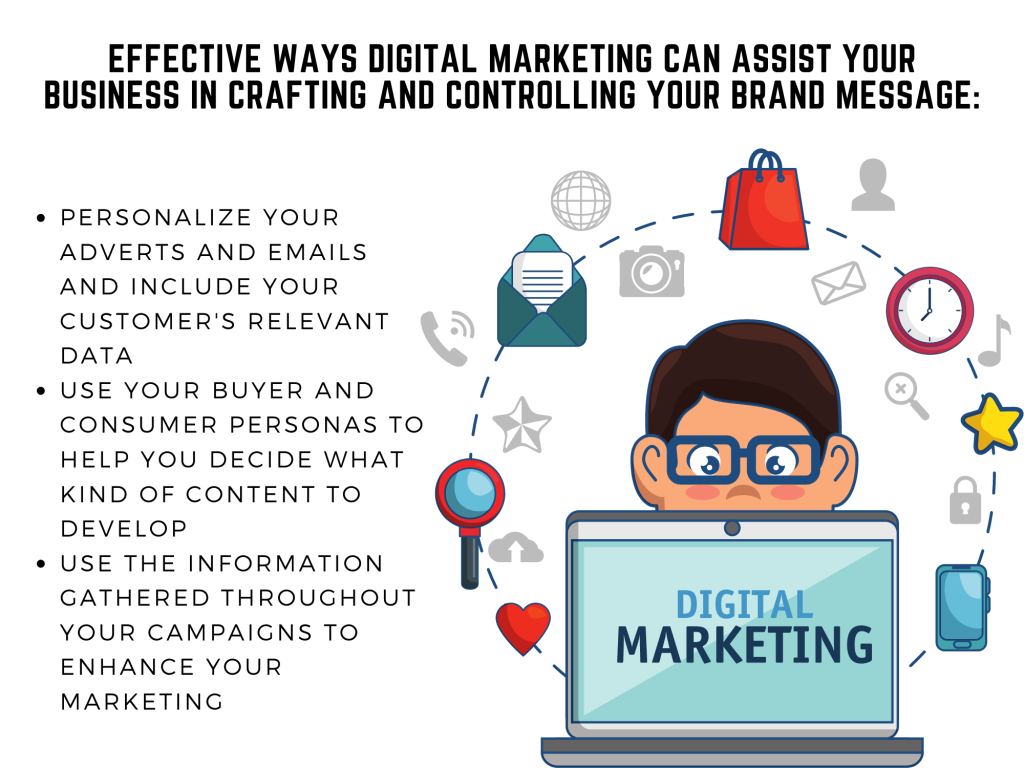
The only aspect where the corporation has complete control over the message and its responsiveness to customer feedback is digital media.
If a news piece about your company is published online, you will be unable to respond to any comments posted. However, if you post a review of your brand on your social platforms, along with any comments or counterarguments, you have complete control over what you say and how you respond to it. Google Reviews is a fantastic illustration of this principle in action.
On a company's Google Reviews, anyone can write whatever they want. Innovative businesses make it a point to respond to these reviews to resolve any customer's concerns or refute an inappropriate or fraudulent review.
Here are a few more effective ways that digital marketing may assist you in crafting and controlling your brand message:
- Personalize your adverts and emails as much as possible by including your customer's name or other relevant information.
- Use your buyer and consumer personas to assist you in deciding what kind of content to develop. Make sure your material appeals to your target audience.
- You can use the information gathered throughout your campaigns to enhance your marketing.
6. Make use of tools to target your most valuable customers.
There are many reasons why digital marketing is better than traditional marketing methods. Still, one of the most apparent is that it offers a business with essential customer data.
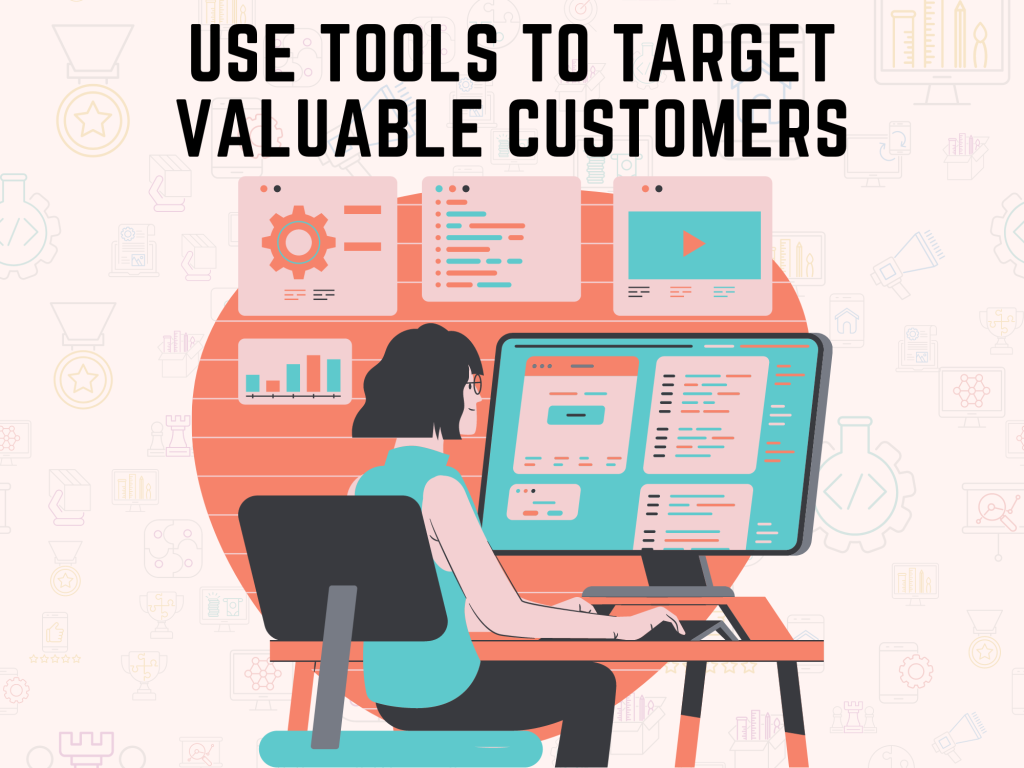
The more data you have on the people that interact with your website and content, the better prepared you will be for the future. You can learn who engages with your content and when by analyzing statistics. This means you may use this data to improve your content and the platforms you use to display it.
This graph depicts some of the most effective digital marketing channels. However, keep in mind that your core customer's demographics may differ from those shown in this chart because this is an average. Determine what works best for your brand and provides the highest return on investment.
For the selling of products, email marketing regularly provides the best ROI of any digital marketing approach. However, this may not be true for other businesses.
7. Provide value to customers by highlighting content that they care about.
Content marketing is an essential aspect of any digital content creation. Hiring a content marketing agency can help you with your marketing concerns.
The write-ups on a web page aren't the only thing that constitutes content. Copywriting, blog entries, social blog posts and hashtags, videos, and even images are examples of content. It is all-inclusive. You can rest assured that if you establish a strategy that includes these types of material for your visitors, you will be providing them with what they want to see.
Here are some ways that offering valuable information to your audience might benefit your business:
- After reading or seeing instructive information on your website, customers are far more inclined to buy from you.
- When compared to paid lead creation, an intelligent content marketing approach can produce 3x more leads. It's also 62% less expensive.
- Companies discovered that after establishing a robust content strategy, the volume of the leads generated was higher than before they had a content marketing plan in place.
Bottom Line
Digital marketing transformed the way firms engage with their customers and how customers find a business. As more and more companies go digital, the importance of digital marketing on business growth will only intensify.
A company's capacity to engage with existing customers and discover new ones will increase if it has robust digital content. The absence of a digital presence also contributes to a lack of confidence in the brand. However, an excellent digital marketing program that includes social media and content marketing can positively impact a business's success. With a competent digital marketing agency, you can meet your objectives and goals for your business much faster.
Create a virtual watercooler to spark innovative problem-solving

When it comes to the future of work, digital skills are only part of the story. Resilience and creativity, empowered by supportive leadership, are essential to a thriving, innovative workforce. A new vision requires cultural changes to help you gain the trust of your employees and new technologies to drive a lasting impact in the marketplace. To learn more about empowering your own workforce, click here.
Innovation is frequently associated with product development, whether it was Henry Ford’s mass-production of the Model T leading to vastly improved assembly lines or Steve Jobs building that first Apple computer in a garage in Los Altos. But innovation also plays a role in the seemingly mundane but vital activity of solving day-to-day operational problems. If salespeople are chasing the same leads or if scheduling shifts for care workers is confusing and capricious, it can damage productivity and demoralize staff. And rather than rely on processes or work orders to address such issues, companies often find that spontaneous, interactive, and collaborative brainstorming moments can deliver a solution. When communication suffers, so does innovative problem-solving. And because the forced move to remote working has sharply impacted the capacity for gatherings around the watercooler (or coffee machine or foosball table), the potential to engage in problem-solving has declined as well.
Two things have to happen to remedy the situation. First, you need to identify how communications between colleagues are failing.
Read the original article here
Apple exec departs over return-to-office policy

"Also at Apple, it is practically impossible to transfer to remote while all other companies are allowing people to remote and posting remote positions. The worst is that Apple does not give a sensible reason - they just they to gaslight you,” another anonymous employee posted.
“Funny thing is that Apple (at least my org) keep saying there is no office space in Bay Area including Cupertino. Higher ups keep pushing hiring new people in other cities like Seattle or San Diego making more distributed teams. So, I don't know why Apple keep pushing RTO when there is not enough office space and teams are distributed anyway,” another anonymous employee posted.
Apple may want to reconsider its policy or risk losing even more top talent, as has been predicted in numerous HRD America stories over the past few months. Google experienced something similar – about two-thirds of its employees said they’re dissatisfied with the company’s decision to require employees in the office three days a week and 34% said they are considering looking for another job because of the return-to-office strategy.
Julia Pollak, chief economist at ZipRecruiter, credits the RTO push for influencing the record number of Americans – 4.54 million – who quit their jobs in March, according to the U.S. Bureau of Labor Statistics.
Read the original article here
